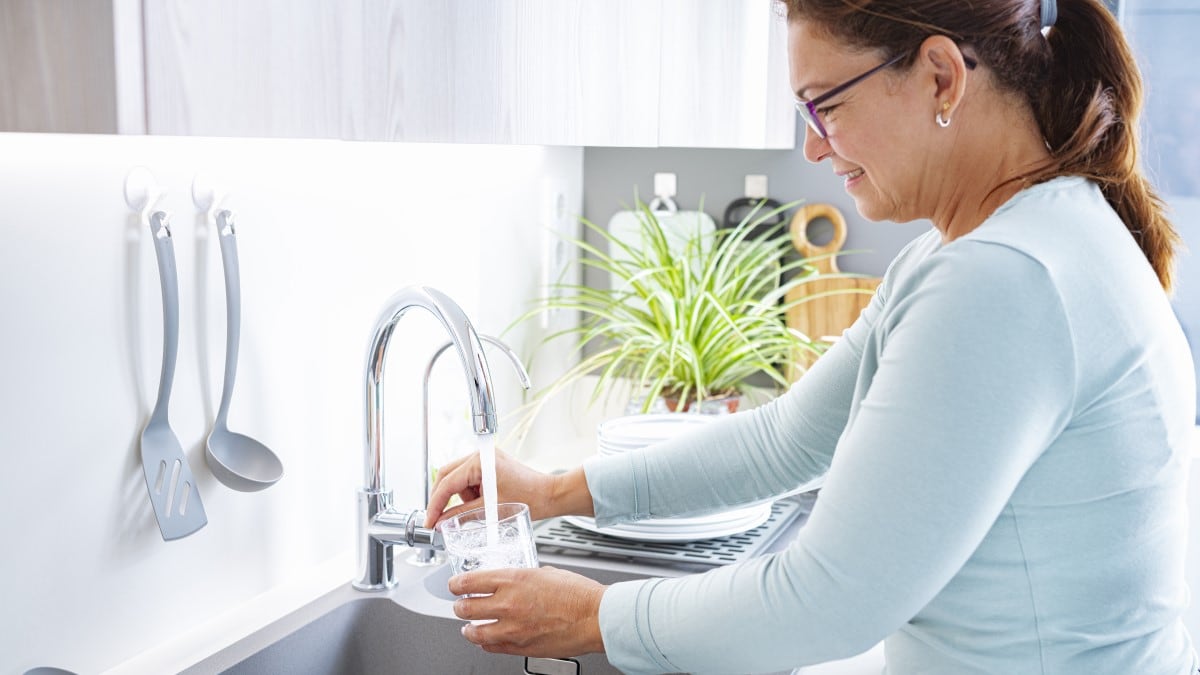Key points
- The better your water quality, the less likely your water is to make you sick.
- The quality of your tap water depends on where it came from and how it has been treated.
- Water utilities must monitor water quality and meet safe drinking water standards.
- Contact your water utility or health department if you are concerned about the quality of your tap water.

Overview
The quality of tap water varies from place to place depending on:
- The quality of the water source
- How it has been treated to remove germs and chemicals
In the United States, 9 out of 10 people get their tap water from a public water system. The utilities that provide this water are required to meet safe drinking water standards set by the U.S. Environmental Protection Agency (EPA).
Causes
Harmful germs or chemicals can get into tap water either:
- At its source (for example, the river your water comes from)
- While traveling through pipes to your home or building
Health impacts
Germs and chemicals in drinking water cause a variety of mild to serious health issues. Symptoms depend on the type of germ or chemical in the unsafe water.

Prevention
Your water utility works to prevent germs and chemicals from getting into your tap water and making you sick.
Meeting safety standards
Utilities must follow EPA's safe water rules. These rules include guidelines for:
- Drinking water quality
- How often to test water
- Water testing methods
EPA sets tap water limits for more than 90 germs and chemicals, such as E. coli and lead. Utilities treat water to remove these germs and chemicals and provide safe water.
Many states enforce their own drinking water standards that are at least as protective as EPA's national standards.
Testing
Your utility must regularly test the water they supply to you. Utilities test for the more than 90 germs and chemicals that EPA limits in water. Find testing results from the previous year in the water quality report your utility sends each year.
How often your utility tests your water depends on:
- The number of people they provide water to
- The type of water body your tap water comes from
- Which germ or chemical they are testing for
Check with your water utility for more details about your water system's testing.
Sharing water quality information
If there is a problem with your tap water's quality, your utility must tell you. If there is an immediate health risk, your utility must tell you about the problem within 24 hours.
If there is no immediate health risk, your utility has more time to notify you. They have either 30 days or a year to tell you depending on how serious the problem is.
Annual water quality report
Your utility must also send you a water quality report each year by July 1.
The report includes information about:
- Where your tap water comes from
- Levels of germs and chemicals in your water over the past year
- Health risks of drinking water with germs or chemicals
- Any time in the past year your utility did not follow EPA's safe water rules
- How to help protect your water
Contaminated water
If your tap water gets contaminated with germs or chemicals, follow advice from your utility or health officials. Depending on the problem, officials may issue a drinking water advisory. Read the advisory for specific recommendations on how to avoid getting sick from the water.
If you suspect harmful germs or chemicals are in your water or have other water quality concerns, contact your water utility or health department.
